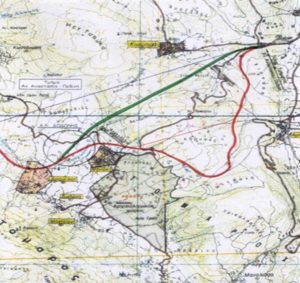
Environmental Policy
- ΑΡΧΙΚΗ
- »
- ENVIRONMENT
- »
- Environmental Policy
ENVIRONMENT
The Egnatia Motorway is one of the first large-scale public works to apply a system of environmental management, that is, a method of organising and implementing environmental protection measures in the design, construction, and operation stages of the project.
The project is currently covered by Joint Ministerial Decisions on the approval of Environmental Terms, according to Law 1650/86 and Law 3010/02 on the “Protection of the Environment”, comprising mandatory mitigation measures to prevent and address environmental impacts.
EGNATIA ODOS S.A.:
- Aims at designing, constructing, and operating the motorway, while at the same time making an effort to minimise or even prevent the impact on the environment.
- Introduces a new environmental strategy and a new perception of highway construction and protection of the natural and manmade environments, by investing over 7% of the total budget.
- Sees to the issuance of Joint Ministerial Decisions (JMD’s) on the Approval of Environmental Terms both for the main project and the accompanying works.
- Aims at improving its environmental “performance” based on the Greek and Community legislations on environmental protection, the international standards, and the principles of sustainable development.
- Cares specifically for the national identity of the highway, along with operability and safety.
Apart from its operation, the Egnatia Motorway entails a journey across:
- the Greek nature and landscape
- the Greek history and culture
- the Greek natural resources and geo-environment
During construction, certain sections of the road alignment were improved or addressed from scratch due to the severe environmental problems involved. Such cases are the Dodoni archaeological site, the habitat of the brown bear (Ursus arctos) in Panagia – Grevena section, the Nestos River crossing, the springs and the ancient temple of Lefkopetra in the Prefecture of Imathia etc. You can read the company Environmental Management Policy (in Greek) by clicking here.
THE ENVIRONMENT SURROUNDING THE ROUTING OF THE EGNATIA MOTORWAY
The successive natural and manmade environments along the project are exceptionally diverse, both through the mountains of Pindos and Western Macedonia, and the plains of Central / Eastern Macedonia and Thrace.
The Egnatia Motorway runs through Greek mountainous and plain landscapes of exquisite beauty and ecological importance. Its alignment follows the Ancient Roman Via Egnatia. Along this ancient route, within an approx. 1000 meters zone, 270 sites of historical interest have been identified, while in its vicinity, significant archaeological sites and natural resources of critical importance are located (gold mines, deposits of various metals, wetlands, ground and surface waters, high capacity soils, etc).
The Egnatia Motorway runs past Pindos and other Greek mountains and reveals a variety of exceptionally interesting geological formations, valleys and ravines.
Along the route of the highway one can find:
- 17 Natural Habitat Areas protected under the European “Natura 2000” Network.
- 4 Wetlands protected under the Ramsar Convention.
- 70 wildlife conservation areas (formerly wildlife reserves).
- 270 sites and monuments of historical interest.
- Most of the longest rivers in Greece (Evros, Nestos, Strymonas, Gallikos, Axios, Aliakmonas, Venetikos, Metsovitikos, Arachthos, etc).
TOOLS FOR THE PROTECTION OF THE ENVIRONMENT
- Environmental impact studies, (Environmental Impact Assessment Prestudy and Study, Technical Reports), both for the main works and activities, as well as for the accompanying ones (e.g. borrow pits, aggregate and other materials quarries, deposit areas, construction sites, etc).
- Landscaping Restoration Designs.
- Amendment of design and construction contractual documents.
- Landscape Restoration Guidelines (OSAT, in its Greek acronym).
- The Excavation Expenditure Management Guide, for terms and conditions governing the financing of archaeological excavations.
- Design for the recording of archaeological sites along the motorway alignment.
- Operating Procedures on environmental issues.
- Plans and Programmes concerning the Implementation of Environmental Terms.
- Monthly and annual reports’ standardisation of construction contracts on environmental issues.
- Representation on coloured maps of the main requirements for environmental protection, within the framework of the construction of new sections.
- Monitoring programmes of air, noise and water pollution, during the operation of the motorway.
- Development of a Data Base to check adherence to the Environmental Terms during the operation of the Egnatia motorway.
INNOVATIVE PROGRAMS
- Establishment of Eco-Museums along the route (Pilot application in Grevena).
- “Smart stops” along the route that promote the natural and cultural heritage along the axis.
- Designs for the aesthetic configuration of tunnel portals
- Research on alternative environment-friendly methods aiming at the protection of difficult and rocky slopes against surface corrosion, as well as at their restoration
- Experimental construction of a rock wall at Kavala By-pass
- Application of bioengineering in the area of Komotini
- Pilot river training in Epirus with the use of gabions made of local rock
- Design and construction of noise barriers
- Construction of a pilot pollution control unit on “Kouloura – Kleidi” road section
- Limitation of power consumption
- Waste Management



